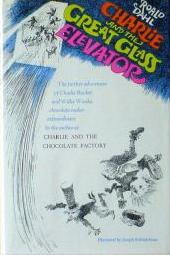- How many times have you had project ideas that sounded great in your head, but when you tried to put them into practice they were impossible to complete? As a relatively new teacher it happens to me quite a lot. The project that follows was made possible through careful planning and a series of fortunate events. The people that I worked with really made the difference. For once everything fell into place in Teacher Universe.
1. An idea is born
It all begun while I was thinking about the originality of the materials we teach in ELT. I mean that in theory the materials should be as realistic and authentic as possible, but this is not always feasible. There are a number of constraints when it comes to that, mainly the accessibility, level of difficulty and modification of the material in order to be suitable for young children. This year one of the writing tasks our students had to submit was an interview. Throughout the years we ask our students to interview someone they know, a neighbour with an exciting profession or someone they love or admire very much. There is no harm in that, but why not give our children the opportunity to meet people with an exciting story to tell and let them find out on their own about it? Why teach when you can show? What is more authentic than that? So after discussing it with my colleagues, we decided it would be a great idea to invite someone to school to talk to the children about their unique experience.
2. Topic
- The next issue I faced was the topic of the discussion, which would be directly related to the person we would invite. Though I know many people that think outside the box and have extraordinary tales to tell, not all people have the ability to convey that to the children, especially if the topic is sensitive. The topic I had in mind was conflict in societies both in national and international levels, more specifically war situations and their effect on children. Our country is going through a difficult phase right now. We need to support our children through this, highlight the importance of tolerance, solidarity to the ones in need and speaking out for the ones that can't speak for themselves. That narrowed down the list of interviewees greatly. Then it came to me. There was one person I knew that could be just right. His name is Stavros Xatzopoulos and he is the lead singer of the Greek band Deus ex Machina. They have given numerous concerts for charity and participated in anti-war campaigns and anti-racist festivals both in Greece as well as abroad. During the war in former Yugoslavia, and while I was too young to even vote, they toured Serbia in a series of charity concerts and visited Skopje. Maybe he could help. So I threw the idea his way and he willingly agreed, which is something I thank him for.
3. Preparation
- Believe it or not the next step of the project was the difficult one. Informing the children about one of the worst wars our "neighbourhood" has seen, without taking sides, giving out the facts without being too gory, was the most difficult part for me. Especially with young children a picture speaks a thousand words, so made them a PowerPoint video summing up the most important facts about that war. I made the video for my classroom use only, the thought of this blog wasn't born yet, so I used photos from the internet, unfortunately without keeping a link record. The video that follows was NOT made for commercial use but for educational purposes solely. However, if you find photos that belong to you and don't want me to include them please contact me and I will gladly take them down. What is more I will be glad to add links and citation if only I had them.
- After watching the video the children in groups wrote down the questions we would ask Stavros. I used this activity to revise Simple Past and Present Perfect, which where what we had been working on during the past month. This is the list of questions they came up with.
- The interview took place one Thursday morning in our school and we all had a lot of fun. The children were intrigued and engaged in the conversation. Our guest answered our questions with sensitivity and simplicity.
5. Follow up
- The project did not end here. The following week the children had to produce a short article based on the interview. We made thank you cards to our guest and anti - war posters. In the months that followed some children produced poems that were directly related to the conversation we had with Stavros.The best thing is that they were not even asked to do so. This shows that the effect of the conversation was profound and long lasting.
- I had a lot of fun designing and implementing this project. I would repeat it in a heartbeat. It is not always easy to open up your classroom to the outside world. However, we have to teach in relation to the real world, not an ideal airtight bubble that exposes our children to filtered stimuli. Our children are smart, can pass judgement and can tell between people that are original and true and people that are self-absorbed and fake. So choose your people carefully, bring them in and let your students do the rest. It is totally worth it.
 |
| Part of the "thank you" booklet we made for our guest! Μέρος του ευχαριστήριου βιβλίου που έφτιαξαν οι μαθητές της έκτης δημοτικού της Σχολής Χιλλ. |











.jpg)
.jpg)
.jpg)
.jpg)
.jpg)
.jpg)
_coverart.jpg)
.jpg)
.jpg)
.jpg)
.jpg)

.jpg)



























